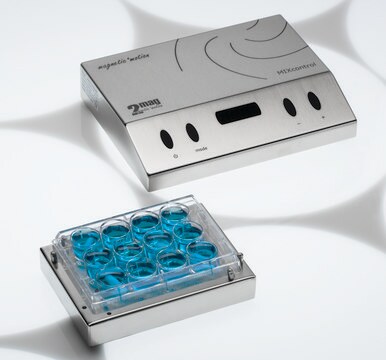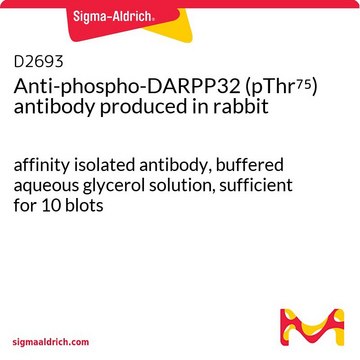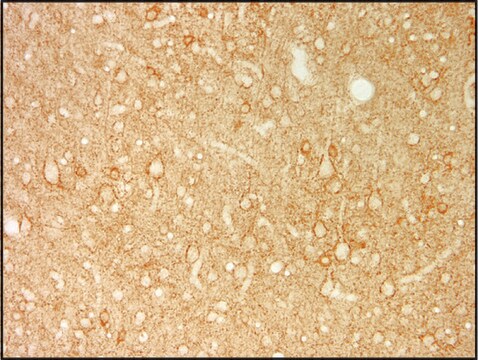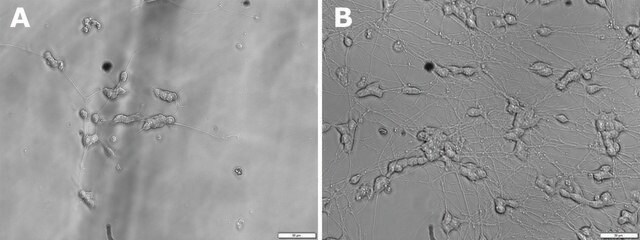推荐产品
生物源
rabbit
品質等級
抗體表格
affinity purified immunoglobulin
抗體產品種類
primary antibodies
無性繁殖
polyclonal
純化經由
affinity chromatography
物種活性
rat, human, chicken
製造商/商標名
Chemicon®
技術
immunohistochemistry: suitable
western blot: suitable
NCBI登錄號
UniProt登錄號
運輸包裝
dry ice
目標翻譯後修改
unmodified
基因資訊
human ... NTF3(4908)
特異性
神经营养因子3(NT3)与重组人BDNF、重组人NT4和小鼠NGF的交叉反应性低于0.1%。
免疫原
11个氨基酸的肽,对应于与BSA偶联的小鼠神经营养因子3(NT3)的氨基末端。序列为H2N-YAEHKSHRGEY。
應用
使用经过验证可用于WB、IH的抗神经营养因子3抗体对神经营养因子3进行检测。
免疫组化:1-10 μg/mL (参见建议的实验方案)
免疫印迹:1-10 μg/mL
体外生物活性抑制:1-10μg/mL
体外动物研究
最佳工作稀释度必须由最终用户确定。
免疫印迹:1-10 μg/mL
体外生物活性抑制:1-10μg/mL
体外动物研究
最佳工作稀释度必须由最终用户确定。
研究子类别
神经化学 & 神经营养因子
神经化学 & 神经营养因子
研究类别
神经科学
神经科学
外觀
亲和纯化的免疫球蛋白。 PBS冻干,不含防腐剂。用无菌蒸馏水复溶至需要的体积。建议浓度为0.5-1g/mL。
儲存和穩定性
以未稀释的等分试样的形式在-20至-70°C下保存长达一年。应避免反复冻/融循环。
法律資訊
CHEMICON is a registered trademark of Merck KGaA, Darmstadt, Germany
免責聲明
除非我们的产品目录或产品附带的其他公司文档另有说明,否则我们的产品仅供研究使用,不得用于任何其他目的,包括但不限于未经授权的商业用途、体外诊断用途、离体或体内治疗用途或任何类型的消费或应用于人类或动物。
未找到合适的产品?
试试我们的产品选型工具.
儲存類別代碼
13 - Non Combustible Solids
水污染物質分類(WGK)
WGK 3
閃點(°F)
Not applicable
閃點(°C)
Not applicable
X F Zhou et al.
The Journal of comparative neurology, 363(1), 69-77 (1995-12-04)
Sensory neurons can be classified into subpopulations based on a variety of characteristics, including their morphology and physiological modalities. Whether any of these classifications correlates with neurotrophic sensitivities has not been determined. We have recently reported that a subpopulation of
Brain microglia/macrophages express neurotrophins that selectively regulate microglial proliferation and function
Elkabes, S, et al
The Journal of Neuroscience, 16, 2508-2521 (1996)
Localization of neurotrophin-3-like immunoreactivity in the rat central nervous system.
Zhou, X F and Rush, R A
Brain Research, 643, 162-172 (1994)
Huan Liu et al.
Experimental neurology, 241, 125-137 (2012-12-25)
The olfactory system continuously incorporates new neurons into functional circuits throughout life. Axons from olfactory sensory neurons (OSNs) in the nasal cavity synapse on mitral, tufted and periglomerular (PG) cells in the main olfactory bulb, and low levels of turnover
我们的科学家团队拥有各种研究领域经验,包括生命科学、材料科学、化学合成、色谱、分析及许多其他领域.
联系技术服务部门







